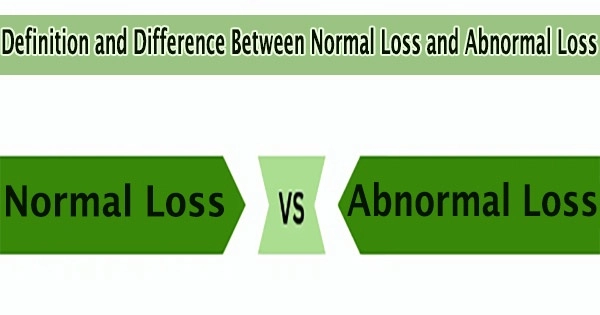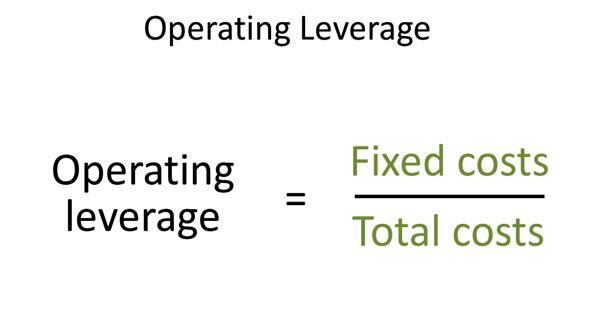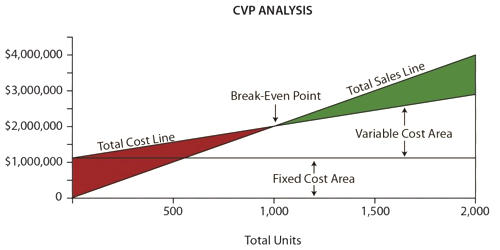In reality, a loss is considered normal if it happens as expected during regular company operations, whereas a loss is considered abnormal if it happens unexpectedly or outside the bounds of regular business operations.
Normal loss is an unalienable loss, that occurs during the production process. These losses are allocated among the remaining product units and reported right away in the books of accounts.
On the other hand, any loss arising accidentally due to unforeseen events is termed as an abnormal loss. As these are considered as an expense to the company, the cost is not included in the cost of production.
Definition of Normal Loss –
Normal loss is defined as a type of loss that takes place in certain situations due to the nature of used processes and raw materials and that cannot be avoided. Normal loss takes place naturally such as spoiling, evaporation, leakage, or breakdown. Normal loss can be estimated with the help of prior experiences, technical knowledge, and required formulas.
Normal losses are not being charged as they are considered the part of production cost. Normal loss occurs initially before the process starts or meanwhile when any process is executed.
Normal Loss can be calculated as:
Number of Normal Loss Units = Input × Expected Percentage of Normal Loss
There are four forms of normal loss. They are:
- Normal waste: Normal waste is defined as a type of material that is discarded and has no value.
- Normal scrap: Normal scrap is defined as a type of material that is discarded and has some value.
- Normal spoilage: Normal Spoilage is defined as a type of production that does not meet quality standards and is discarded.
- Normal defectives: Normal defectives are defined as a type of production that does not meet quality standards but can be sent for preprocessing again.
Normal Losses are not charged to closing work in progress, as they are deemed as a part of the cost of production. At the time of computation of equivalent units, normal losses are not considered and in this way, the cost of normal loss is instinctively apportioned to the total units produced, when it is subtracted from the cost of raw material.
Definition of Abnormal Loss –
Abnormal Losses may arise due to mishap, mischief and inefficiency. This loss is not natural and can be avoided with proper care. Abnormal loss is caused by factors that are outside of the business’s control, such as natural disasters or fraud. This type of loss can be avoided by taking some prevention measures.
The cost of abnormal loss is not added to the cost of production. Further, the units of goods produced do not subsume it. The value of stocks is not inflated during abnormal loss. Abnormal loss cannot be predicted earlier. Determining the root cause of abnormal loss is difficult at many times and therefore requires skilful and more significant investigation.
Abnormal Loss can be calculated as:
Units of Abnormal Loss = Expected Output – Actual Output
Where, Expected Output = Input – Normal Loss
Abnormal loss, on the other hand, is often unexpected and difficult to predict. The cost of abnormal loss is charged to a separate account called Costing Profit and Loss Account.
Key Differences Between Normal Loss And Abnormal Loss
Normal Loss:
- Normal loss is an expected and inherent part of the production process.
- It occurs due to factors such as evaporation, shrinkage, spoilage, or other natural and unavoidable causes during the production of goods.
- Normal loss is predictable and can be estimated based on historical data and industry standards.
- It is considered a cost of production and is included in the cost of goods manufactured (COGM) or cost of goods sold (COGS).
- Normal loss is accounted for in the regular course of business, and its occurrence does not necessarily indicate any operational problems or inefficiencies.
- In financial statements, normal loss is treated as a cost and is allocated to the cost of production.
Abnormal Loss:
- Abnormal loss, on the other hand, is unexpected and occurs due to abnormal and non-routine events or circumstances.
- It may result from accidents, equipment breakdowns, theft, natural disasters, or other irregular incidents that are not part of the normal production process.
- Abnormal loss is typically not included in the cost of goods manufactured or sold because it is not considered a regular production cost.
- Instead, abnormal losses are treated as an expense in the income statement, reducing the profitability of the period in which they occur.
- Organizations often investigate and analyze abnormal losses to identify their causes and take corrective actions to prevent their recurrence.
Identification of abnormal loss is quite important so that the company’s management has an idea of the extent to which the actual losses are not in line with the expected ones. Normal loss is a known and expected part of production, while abnormal loss is unexpected and results from abnormal events or circumstances. Both types of losses are recorded in financial statements but are treated differently in terms of cost allocation and reporting.
















